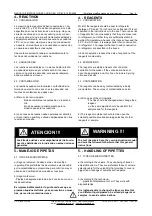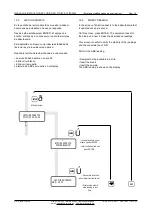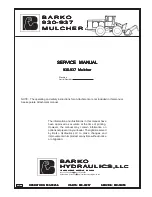
J.P. SELECTA
, s.a.
Ctra. NII Km 585.1 Abrera 08630 (Barcelona) España
Tel 34 93 770 08 77 Fax 34 93 770 23 62
e-mail: [email protected] - http://www.jpselecta.es
INSTRUCTION MANUAL CODE 80137 REV B
14/03/2008
(Can be modi
fi
ed without notice)
Pag.: 3
2.-VOCABULARIO BÁSICO
CUBETA:
Contenedor de vidrio o plástico transparente, de espesor
y profundidad de
fi
nidos, para el análisis fotométrico de
líquidos. Para la medición se introduce en el portacubetas
del fotómetro.
FOTÓMETRO:
Aparato electrónico que mide la atenuación de la intensi-
dad luminosa que atraviesa el líquido contenido en la cu-
beta. Dicha atenuación es debida a la absorción de la luz
de una determinada longitud de onda. La concentración
de la solución contenida en la cubeta se mide mediante la
relación entre !a intensidad luminosa entrante y saliente.
LONGITUD DE ONDA:
La radiación luminosa se propaga en forma de ondas pe-
riódicas. La longitud de onda es la distancia entre puntos
que tienen fases iguales en dos ciclos consecutivos de
una onda periódica, según la dirección de propagación
de la anda. La luz visible tiene una longitud de onda
comprendida entre 380 y 780 nm que abarca todos los
colores del arco iris siendo ¡os azules en las más cortas y
e! rojo en las ondas más largas. Por debajo de 380 mm,
estamos en zona ultravioleta.
MUESTRA:
Pequeñas cantidades representativas, extraídas del
organismo o de sus excreciones para realizar exámenes
bioquímicos, hematológicos, citológicos serológicos o
microbiológicos.
PLASMA:
Residuo acuoso proveniente de la separación de los
componentes celulares de la sangre no coagulada, por
ejemplo, por centrifugación.
SUERO:
Es el residuo acuoso de la sangre coagulada. La separa-
ción del coágulo del suero puede hacerse por decanta-
ción o centrifugación.
ENZIMAS:
Son proteínas que catalizan reacciones bioquímicas
especí
fi
cas. Medimos la actividad enzimática en condicio-
nes de reacción mantenidas constantes y exactamente
de
fi
nidas. El Sustrato debe tener una concentración alta,
el pH debe ser el óptimo para la reacción y la tempera-
tura debe ser pre
fi
jada y controlada estrictamente, los
enzimas muestran una actividad mucho mayor a 37 °C
que a 30 °C. Según el tipo de enzimas identi
fi
cados en
los
fl
uidos podemos deducir el tipo de célula afectada.
2.-BASIC CONCEPTS
CELL:
Glass or transparent plastic container, with a thickness
and depth precisely de
fi
ned, for the fotometric analysis
of liquids. For the mensuration it is introduced into the
photometer cell holder.
PHOTOMETER:
Electronic instrument that measures the light intensity
across the liquid that is in the cell. This attenuation is
due to the absorption of the light at certain wave length.
The concentration of the solution contained in the cell is
measured by means of this light attenuation.
WAVE LENGTH:
The light spreads in form of periodic waves. The wave
length give the colour of the ligth and is meassured in
nm (nano-meters). The visible light has a wave length
among 380 and 780 nm that it includes all the colors of
the rainbow being you blue in the shortest and and red in
the longest waves. Below 380 mm, we are in ultraviolet
region and over the 780nm we are in the infra-red region.
SAMPLE:
Small representative quantities, extracted of the organism
or of their excretions to carry out biochemical exams,
hematológicos or citológicos.
PLASMA:
Watery residual coming from the separation of the cellular
components of the not coagulated blood, for example, for
centrifugación.
SERUM:
It is the watery residual of the coagulated blood. The
separation of the clot of the serum can be made by
decantación or centrifugación.
ENZYMES:
They are proteins that catalizan speci
fi
c biochemical
reactions. We measure the enzymatic activity
under constant and exactly de
fi
ned maintained
reaction conditions. The Sustrato should have a high
concentration, the pH it should be the good one for
the reaction and the temperature should be preset and
controlled strictly, the enzymes show a much bigger
activity to 37 °C that to 30 °C. According to the type of
enzymes identi
fi
ed in the
fl
uids we can deduce the type
of affected cell.




































